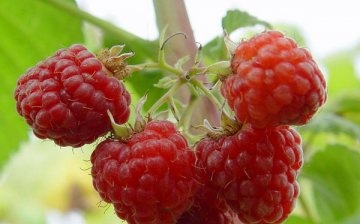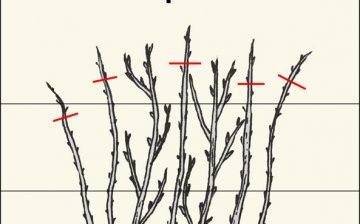Raspberry: care and planting
Raspberries, the care of which should not cause any difficulties and problems, if everything is done in a timely manner and correctly, will endow you with extremely tender, healthy and tasty berries, as well as the most valuable healing raw materials in the form of their leaves.
Raspberry: care and planting
- Raspberries prefer fertile soils, in which there is enough moisture, and the place must be sunny.
- If you decide to plant different varieties of raspberries, then a distance of four meters must be observed between the bushes - this is ideally, but not less than one and a half meters in order to avoid mixing raspberries, while the distance in a row between the same varieties of raspberries should be about 60 centimeters.
- Trenches or holes for raspberries must be prepared in advance, the holes should be up to thirty centimeters deep, humus is poured into the bottom of the hole and the seedling is planted, not deepening it too deeply, distributing the roots horizontally, preventing the tips of the roots from rising up, and sprinkling them with earth, without tamping the soil ... Then the seedling is well spilled, sprinkled with earth and mulched with fallen leaves (if there are no slugs on the site). If a seedling is planted in the spring, then it requires regular watering before rooting, in the fall, watering is carried out depending on the weather. In the first year of the seedling's life, it is better not to allow it to bear fruit, so that the plant does not weaken, does not get sick, and as a result does not die.
- During the fruiting period, the main care of raspberries consists in the regular removal of weeds, in the garter of vines, pruning of raspberries, watering and feeding. The berries need to be harvested every other day in order to ultimately get a high yield, otherwise the berries quickly deteriorate and fall off.
- It is necessary to monitor the density of the raspberry bushes, if the raspberry thickens too much, it can become “wild”, the berries decrease in size, and there are fewer of them. Therefore, the density adjustment must be made several times over the summer; for this, new grown weak and thin shoots are removed. In spring, raspberries should have up to seven shoots.
- In raspberry varieties that bear fruit once, all the fruit-bearing shoots are cut out; in the remaining shoots, the tops are shortened in the spring to a well-developed bud.
- Repaired raspberry varieties are pruned depending on what they want to have in the end. For example: by cutting remontant raspberries to the soil level in late spring, you will get one fruiting - in the fall, but the berries will be large, high-quality, without pests, there will be more of them, and they will ripen earlier than those bushes that are just undergoing the second wave of fruiting. However, there are repair varieties in which the first wave of fruiting comes earlier than in disposable varieties, which is why such radical pruning is contraindicated for them.
- You can fertilize raspberries with any organic matter, but not with fresh manure.






